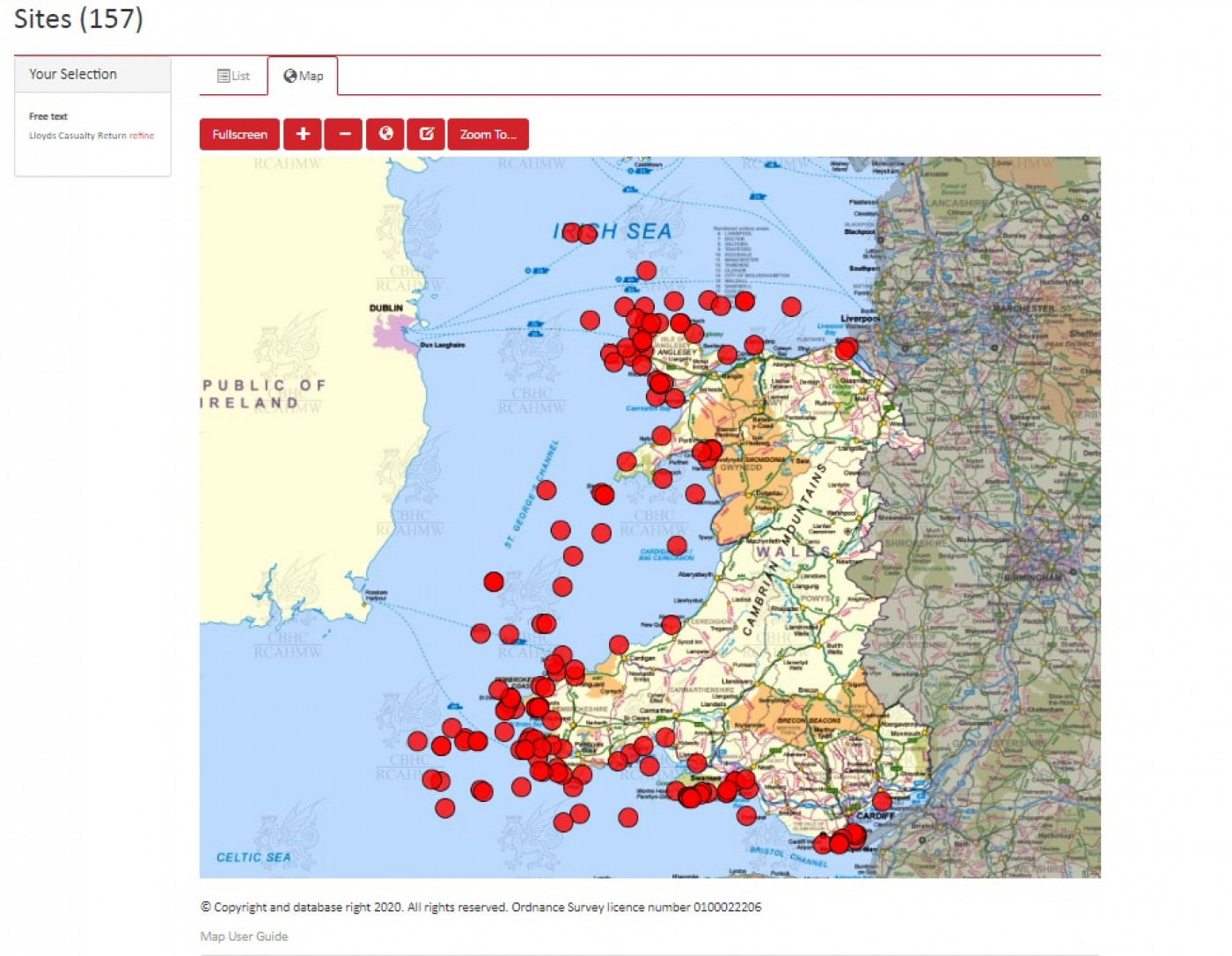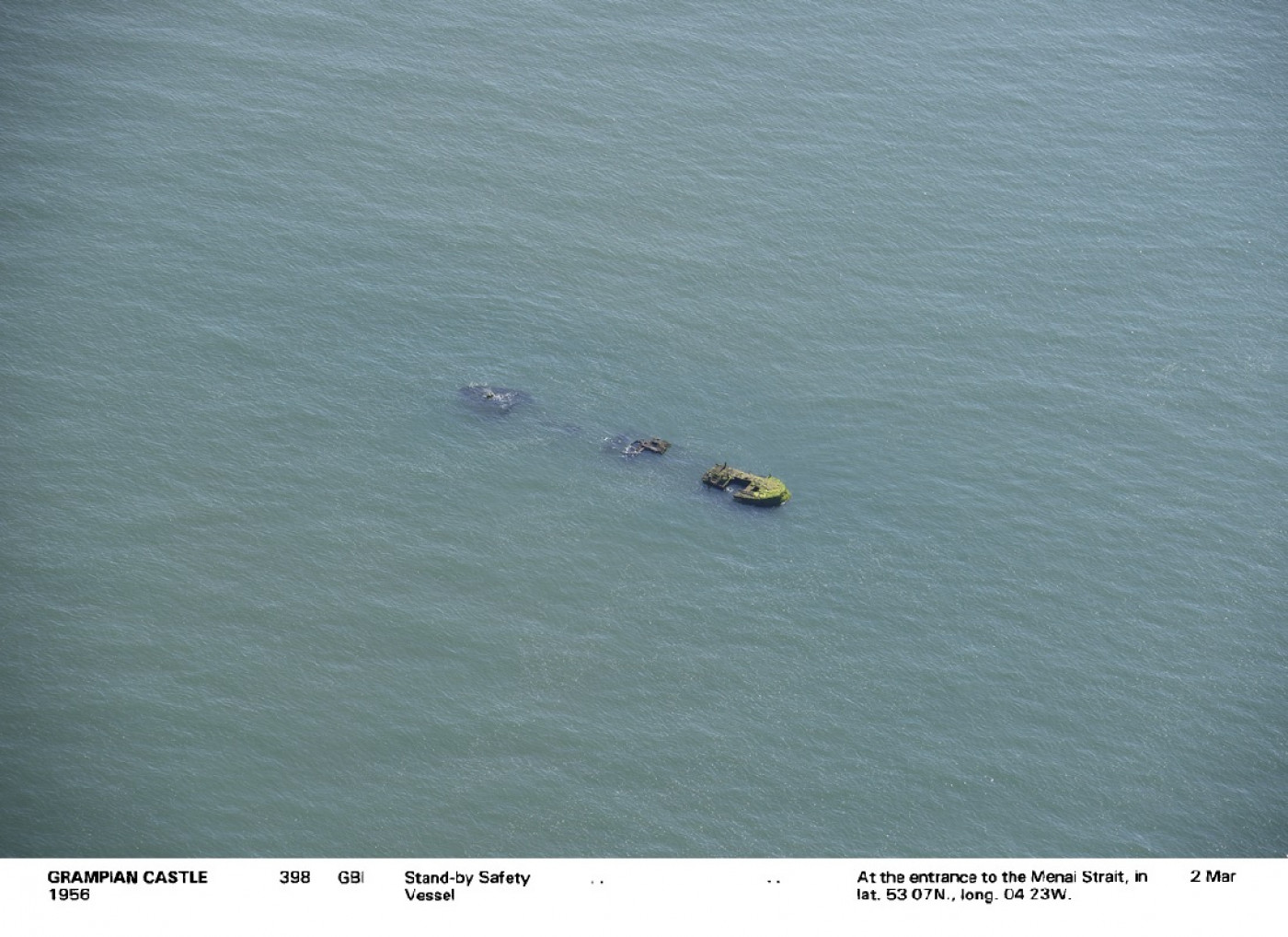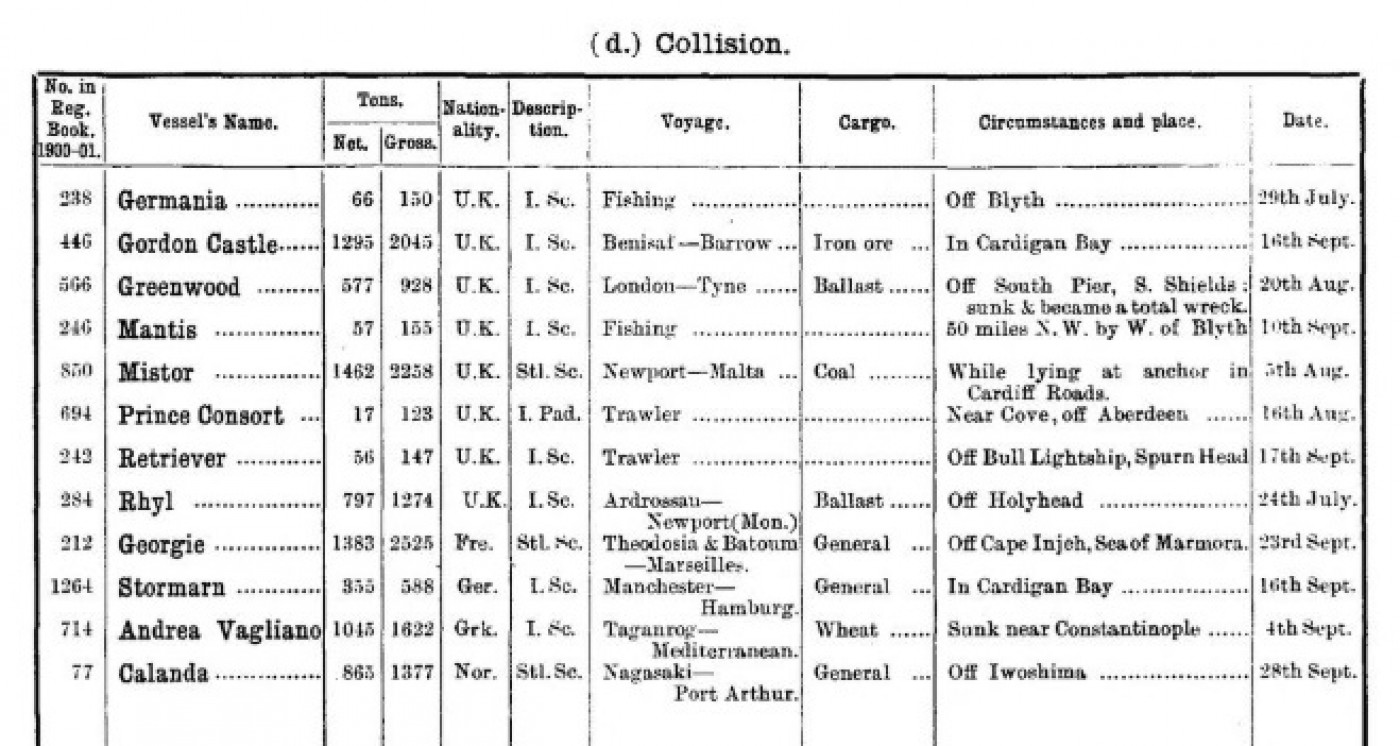Thursday, May 14 2020
In an exciting new project, the Royal Commission on the Ancient and Historical Monuments of Wales and the Lloyd's Register Foundation will use the Lloyd's Register Casualty Returns, available on the HEC website and on Internet Archive, to enhance the National Monuments Record of Wales (or NMRW), available on the website Coflein and link the two records together.
'Making the Link: Lloyd's Register and the National Monuments Record of Wales' brings together two invaluable sources of information for the maritime history of Wales, providing a basis and model for future research. This blog can also be read in Welsh on the RCAHMW website here.

Many of the wrecks recorded in the NMRW already cite the Lloyd's Register Casualty Returns as a source of information © Crown Copyright: RCAHMW.
The Lloyd's Register Casualty Returns and the NMRW
The Lloyd's Register Casualty Returns record the loss of ocean-going merchant ships over 100 gross tonnes globally. Since 1891, these records have noted the size, type and nationality of each vessel lost, as well as the journey the vessel was undertaking and its cargo. Most importantly for the purpose of this project, they also note the location of loss. This allows the project to trawl through the returns and note any losses in Welsh waters.
Once losses are identified, the details are compared with the NMRW. Where information in the Casualty Returns and the NMRW diverge, this is reviewed, and any new sites indentified in the Casualty Returns added to the NMRW. Most importantly, we enhance the NMRW site entires with hyperlinks to the online PDFs of the Casualty Returns, allowing researchers direct access to these invaluable primary sources.

The loss of Grampian Castle is recorded in the Casualty Return for 1987, p.30. (Image: AP2018_278_002 © Crown Copyroght: RCAHMW; Casualty Return © Lloyd's Register Foundation).
A National Record: an International Resource
Although the Casualty Returns are being used to enhance a national record, their international, global nature is inescapable. Events of international importance, such as the First-Sino Japanese War, the Thousand Days' War and the Russo-Japanese War, as well as natural disasters such as volcanic eruptions, appear regularly. Losses are recorded not only near familiar ports, but throughout the world's oceans and even lakes.

The First Sino-Japanese War appears subtly in the Casualty Returns (1 July-30 September, 1894, p.6) when it is noted that the Kow Shing was 'sunk by a torpedo', its cargo - 'Chinese troops'. © Lloyd's Register Foundation.
This international nature reframes Welsh wrecks in global contexts. This is particularly striking in the late nineteenth and early twentieth centuries, as the Casualty Returns reinforce Wales' central place in the global economy. Ships brought timber from Canada, Mexico, France, and Portugal to Welsh industrial ports, while coal flowed from across south Wales - Cardiff, Barry, Newport, Swansea, Llanelli - to every corner of the globe. Slate from Porthmadoc also makes an appearance, as does tin from Port Talbot and even timber bound for the shipyards of the Cardiganshire coast.
More humble goods were transported. The Ogmore was on its way to Cardiff with a cargo of Scottish potatoes when it sunk in 1894. Going the other direction, the Doon was lost in 1903 with a hold full of stout, on its way to Ayr. Still, for many ships, Wales was not the beginning or intended end of their journey and the role of Welsh waters as a thoroughfare is also readily apparent.

Although seperated by several lines, the Casualty Return for 1 July-30 September 1900, p.6 records the collision of the Gordon Castle and Stornman in Cardigan Bay. © Lloyd's Register Foundation.
In short, the Casualty Returns offer an international context to a national monuments record. By linking these two resources together, we hope that users will utilise both and gain a greater understanding of Wales's maritime history. Each entry in the Casualty Returns records a story, many of them tragic, and can be a springboard to historical discovery. We hope that this project will lead the way in encouraging further links between resources and bodies, making both Welsh history and wider maritime history more accessible to all.
This guest blog was written by Dr. Adam N. Coward, Maritime Research Assistant, RCAHMW.
The website Coflein and image C643604 are Crown copyright and are reproduced with the permission of Royal Commission on the Ancient and Historical Monuments of Wales (RCAHMW), under delegated authority from The Keeper of Public Records.
This article has also been published in Welsh on the Royal Commission on Ancient and Historical Monuments of Wales website.

